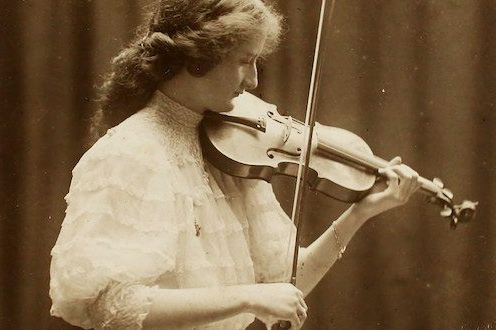Crokinole
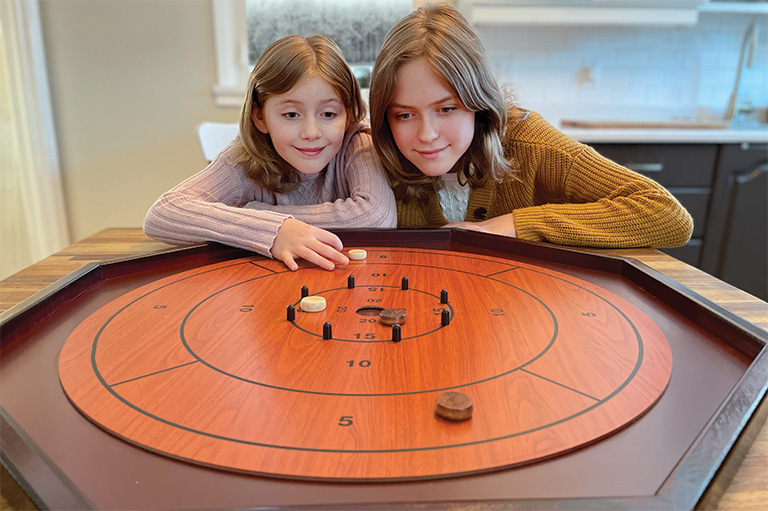
At a time when online role-playing adventures and complex strategy games occupy so much attention in the world of recreation, there’s a heavy wooden board that still gets pulled out in households all over the country, as it has for generations. It’s just always been there. Solid. Unassuming. Patient. And whether you haven’t played crokinole since you were a kid, or you’ve never heard of it, or you’re an ardent fan, its story is a uniquely Canadian one.
The game hit its heyday in the early 1900s at a time when people, especially in rural Canada, largely made their own fun. “Crokinole was as popular as television is today. Perhaps before electricity arrived in a rural community, maybe even before they had radio or gramophones, many people would be somewhat isolated from the rest of the world. But they would gather together around a crokinole board,” the late Wayne Kelly — a.k.a. “Mr. Crokinole” — told the makers of a documentary film about the game in the early 2000s.
When the gentle and gentlemanly Kelly set out to write the history of crokinole in 1986, he immediately discovered how little was known about its origins. All over North America, reference librarians wrote back to him saying they had nothing on file about the game, often expressing surprise or, in the case of one revered source, sniffy dismissal. As Kelly noted in The Crokinole Book, “The Smithsonian Institution in Washington, D.C., responded to my query with an authoritative statement that ‘the curators in our Division of Domestic Life are not familiar with the game of crockinole (their spelling) and feel it is safe to say it is not now, and probably never has been, popular in the United States.’”
With 7 uniquely curated newsletters to choose from, we have something for everyone.
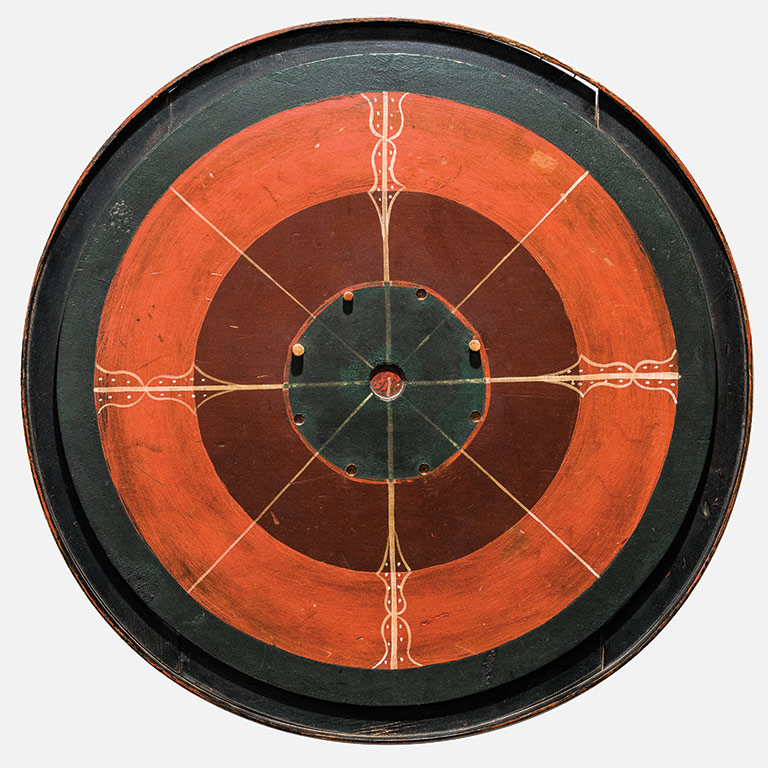
The earliest written reference to crokinole simply mentions that the game was already popular in Canada in the 1860s. The oldest board still in existence was built in 1875 by accomplished carpenter Eckhardt Wettlaufer — who lived southwest of what is now Kitchener, Ontario — as a gift for his five-year-old son, David. The board, along with other work by Wettlaufer, is on display at Schneider Haus National Historic Site in Kitchener.
But Wettlaufer didn’t invent crokinole, and he could only have built the board if he was already familiar with the game. So where did crokinole come from?
Crokinole belongs to a larger category of games that involve shooting playing pieces across a horizontal board in order to score points. The British game squails had a round board and involved aiming discs toward the centre by filliping them — “fillip” meaning “to flick with a finger.” Carrom, which originated in India and is popular in South Asia, uses similar techniques on a square board with pockets in the corners. French Canadians have traditionally played pichenotte, a word that can refer to different games but usually means something almost identical to carrom. The name pichenotte — often inelegantly anglicized as “pitchnut” — may be derived from the word pichenette, meaning a light blow or fillip.
The generally accepted origin of the name crokinole is another anglicism, this time of the French word croquignole, meaning a small, crunchy biscuit (croquer means “to crunch” in French) — perhaps a reference to the small round discs used as playing pieces.
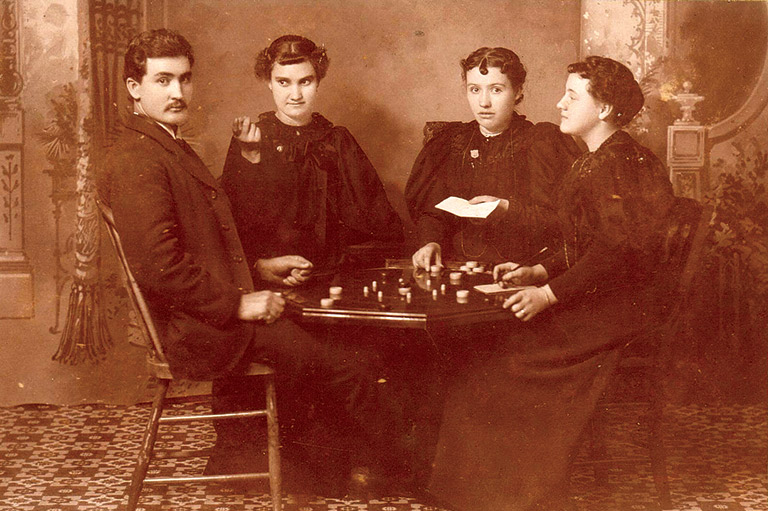
The game is played on a round surface; the outer edge of the board can be round or octagonal. Other than for tournament boards, the dimensions aren’t standardized, a situation that’s likely a by-product of so many boards being homemade. The game can be played by two players or by two teams of two, and each individual or team uses twelve discs as playing pieces. Players take turns flicking a disc either toward the hole at the centre of the board — worth twenty points — or, if an opponent has a disc on the board, toward that disc in hopes of knocking it off the playing area. The board is divided into concentric rings worth five, ten, or fifteen points, with eight much-cursed, evenly spaced pegs set around the line separating the two higher-scoring rings.
Instead of using discs as playing pieces, some people play with wooden rings that can end up lodged around a peg. Some crokinole players — although they are in the minority — use something that looks like a miniature pool cue to strike the disc, instead of flicking it with their fingers. Whatever the method or game pieces, only one team scores per round: The difference in points between the winner and loser goes to the winner, while the loser scores zero. Games are usually played up to one hundred points, which can be reached in a single blowout round of less than five minutes or over half an hour of closely fought, often scoreless rounds.
Those are the basics, but official tournaments have different scoring conventions, and local customs and house rules vary so much that game guides recommend making sure the rules are clear to everyone before starting to play. For instance, it’s pretty much — but not universally — understood that neither the board nor a player’s chair can be moved during play and that players must keep at least part of their backside in contact with the chair when shooting — a regulation often referred to as the one-cheek rule. Some people insist that a player’s disc must directly strike an opponent’s, while others say that an indirect hit — where the disc in play hits another disc on the board, which then strikes an opponent’s disc — is also acceptable. On a free shot (when no opponent’s discs are on the board) some house rules require that the disc be removed if it doesn’t enter the inner circle; others allow the disc to remain no matter where it goes.
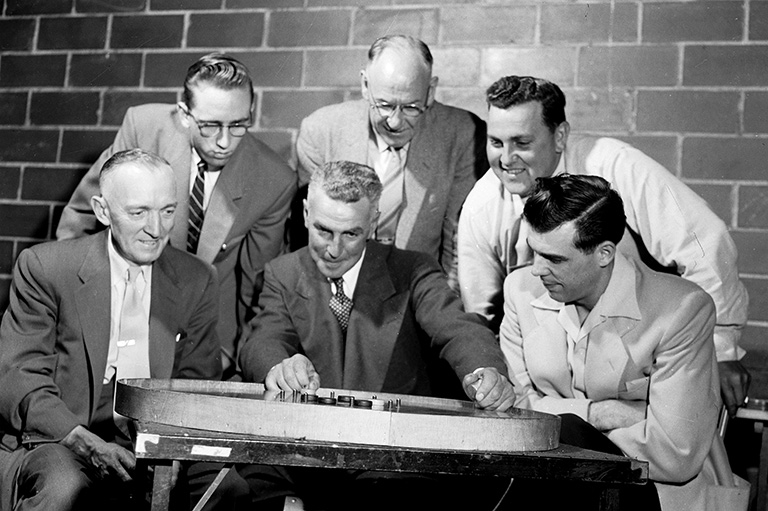
When Kelly appeared on CBC Radio and was featured in newspaper articles in the mid-1980s after appealing for information about crokinole, he received a wide range of fond recollections and regional variations. For instance, he was told that in Newfoundland and Labrador a disc sitting in the centre hole isn’t removed and kept on the side to be counted — as is usual elsewhere — but instead remains in the hole unless dislodged by an opponent’s shot. In The Crokinole Book, still the only significant attempt to document the game’s history, he wrote that in Quebec a piece that bounced off the board, hit the side, and bounced back onto the board was often still in play. He noted that in Manitoba you could retake a shot if it didn’t make it out of the five-point circle, but that whistling at the crokinole table was prohibited.
Just as the play varies, so does the terminology. The game is also known as Knipsbrat — a Low German word meaning something like “flick board” — among Canadian Mennonites, with whom it is especially popular. The wooden playing pieces are variously known as biscuits, discs, pucks, and blocks; the centre might be called the twenty-hole or the pocket; the outer area could be the ditch or the gutter; and those annoying pegs are also referred to as bumpers or pins.
Save as much as 40% off the cover price! 4 issues per year as low as $29.95. Available in print and digital. Tariff-exempt!

Crokinole was ubiquitous in many homes. “It was a catalyst that brought people together,” Kelly said in an interview for the 2013 CBC Radio special The Most Canadian (produced by my husband, Denis Grignon, and me). “It was accessible to males, females, young, old. A six-year-old child could play with his ninety-six-year-old great-grandmother, and they could both have fun.”
The game was easy to learn, people could fashion their own board and discs, and it provided a welcome diversion on long winter evenings. At least as important at a time when many strict Protestant households didn’t tolerate playing cards, crokinole was, in the words of an 1895 catalogue for the American mail-order company Montgomery Ward, “a new and intensely interesting game for everybody, with no objectionable features.”
That doesn’t mean everyone loved it, of course. In an 1897 journal entry, the famous P.E.I. author Lucy Maud Montgomery described going to a party at which her companion refused to dance. “I didn’t dance much either but played croquinole most of the evening and was bored to the point of tears. I love dancing and I loathe croquinole.”
By the 1890s, Kelly wrote, progressive crokinole parties, where players moved to a different house depending on whether they won or lost, were widespread. Crokinole clubs sprang up all over — some socially oriented, some competitive. Their numbers declined with the advent of mass entertainment in the 1950s, but the National Crokinole Association (NCA) still lists twenty-five clubs in Ontario and six elsewhere in Canada. The organization maintains up-to-date rankings of players on the NCA Tour. The marquee event is the grandly named World Crokinole Championships, started by Kelly in 1999 and held in an arena in Tavistock, Ontario, near the stomping grounds of Eckhardt Wettlaufer. The competition draws some players from other provinces, a few from the United States, and the occasional participant from abroad.
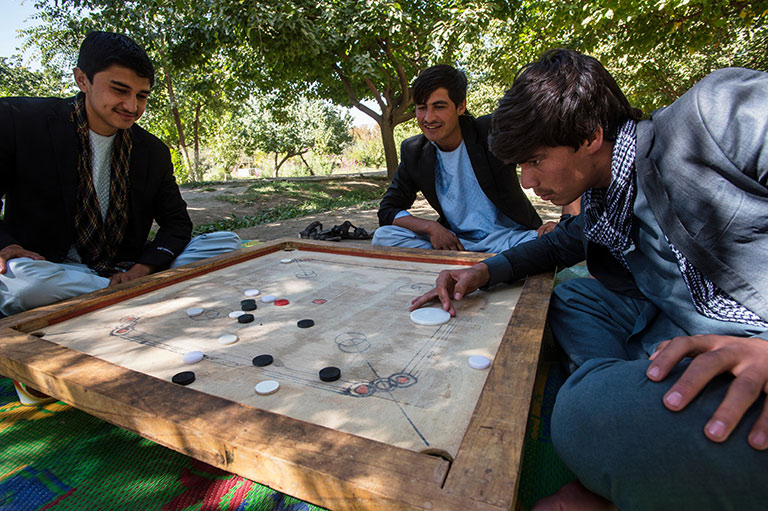
There are at least ten active crokinole clubs in the United States, including the Tuscarora club, which hosts an annual Turtle Island crokinole championship at the Tuscarora Nation House in Lewiston, New York. “We usually played during the winter months at my grandma’s house on the square boards with rings and nets in the corner, in the late 1960s,” club member Dale Henry explained. “Started a crokinole get-together around 2005 at the Tuscarora Nation School. Was amazed how many local folks remembered growing up and playing.” Meanwhile, at the Crokiholics crokinole club in Middletown, New Jersey, “we enjoy drinking beer or scotch when we play,” club member Christopher Butkowski noted. He added: “We occasionally create our own rules that typically are put in place to mock the other players.”
The NCA lists ten clubs in Europe (including rival Italian leagues Crokinole Italia and Federazione Italiana Crokinole Amatoriale, or FICA) and three in Australia. Whether they are authentically local or the result of expatriate Canadians’ efforts isn’t clear. A Hungarian company, Woodestic Crokinole, supplies boards to European customers such as the British board game reviewer on the YouTube channel Shut Up & Sit Down, who described crokinole as “full-on addictive” and suggested it might just be worth the three hundred dollars he paid for an authentic wooden board.
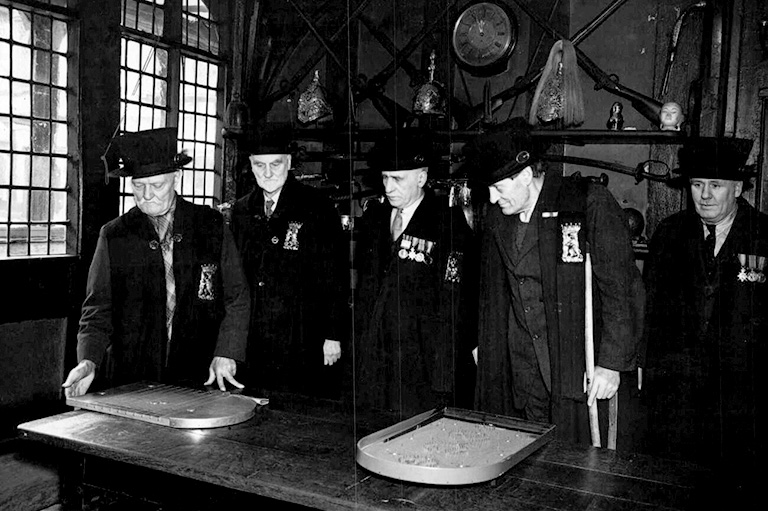
Cheaper versions made of printed cardboard in a wooden frame are available, or clever woodworkers can make their own. The board comes with discs that might be unconventional colours, such as red, green, yellow, or blue — a considerable departure from the traditional options of beige, brown, dark brown, or black.
If you’re having a debate about Canada’s favourite game, picture a woodworker in Ontario polishing the surface of a board destined to become a family heirloom played upon by generations to come. Or call to mind a parlour in Nova Scotia, or a community centre in Saskatchewan, on a Sunday afternoon a century ago. The scene isn’t complete without a group gathered around a crokinole board. Hockey or lacrosse? “Forget about it!” Wayne Kelly said with a grin. “Crokinole is by far the most popular game.”
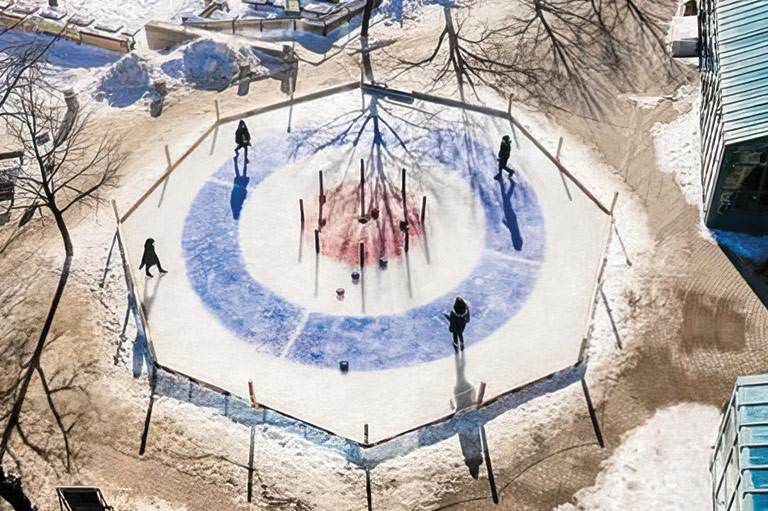
We hope you’ll help us continue to share fascinating stories about Canada’s past by making a donation to Canada’s History Society today.
We highlight our nation’s diverse past by telling stories that illuminate the people, places, and events that unite us as Canadians, and by making those stories accessible to everyone through our free online content.
We are a registered charity that depends on contributions from readers like you to share inspiring and informative stories with students and citizens of all ages — award-winning stories written by Canada’s top historians, authors, journalists, and history enthusiasts.
Any amount helps, or better yet, start a monthly donation today. Your support makes all the difference. Thank you!
Themes associated with this article
Advertisement

